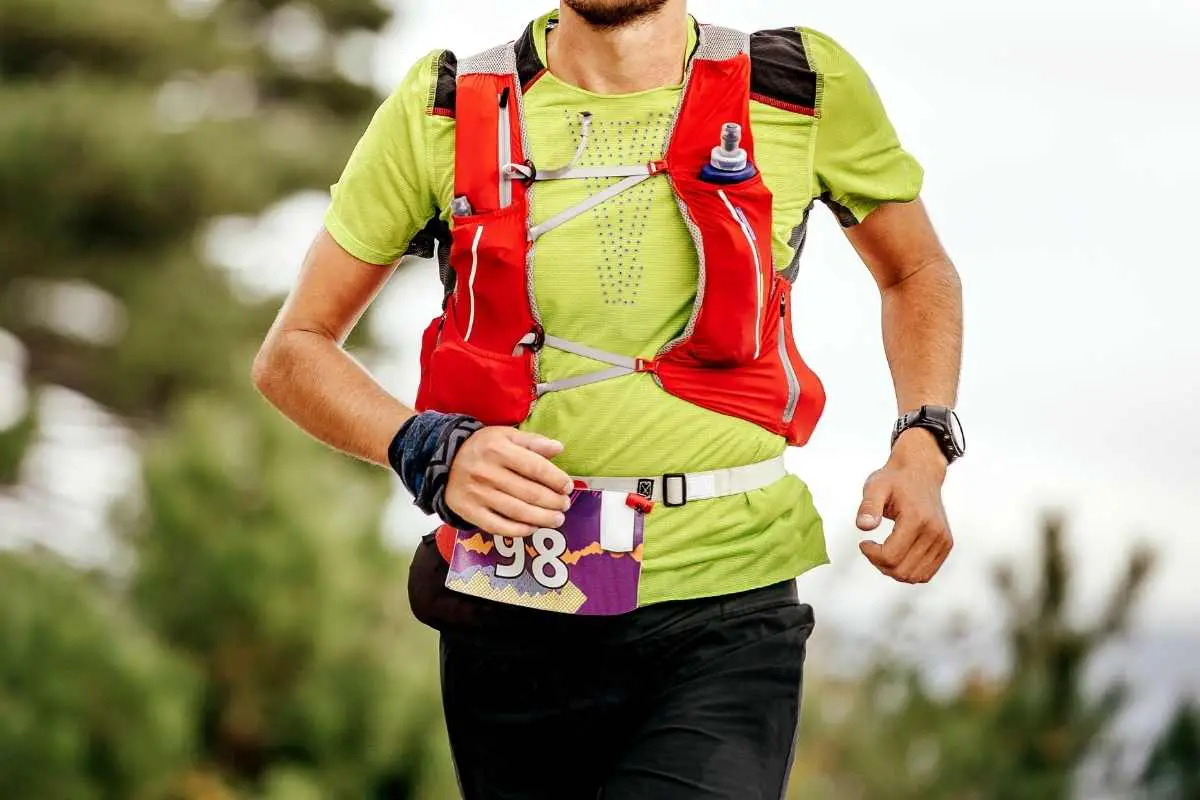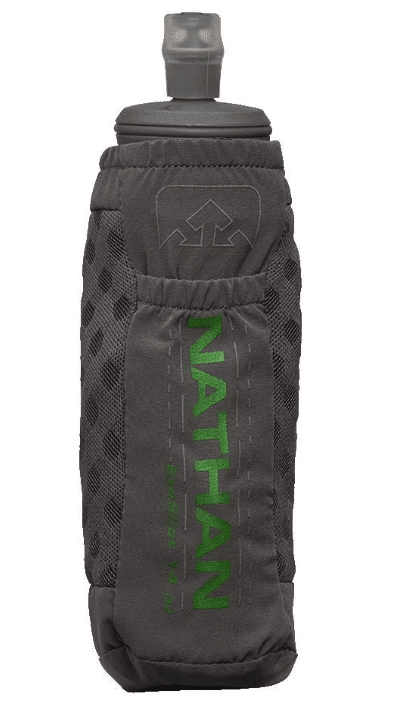In the years since I started running, it feels like I’ve tried every option there is to carry fluids on a run. To carry a bulky water bottle in your sweaty hands distracts you and makes a long run or a hard run more mentally challenging.
Running without water puts you at risk of dehydration and heatstroke. Check out this post I wrote on why you should drink water when running. Is there a solution to this conundrum?
Five ways to carry water while running:
- In a hand-held ergonomically designed bottle that straps to your hand
- In a hand-held, soft shell bottle that straps to your hand and shrinks as you drink
- In a hydration belt
- In a hydration vest
- In a hydration backpack
Thanks to sports gear creators and manufacturers, carrying water with you while you run no longer has to be a source of consternation for you. This article describes five excellent ways to make hydration easy for you.
At what running distance should you carry water?
A recent study entitled Personalize Hydration Requirements of Runners, examined hydration requirements for runners for less and over 60 minutes of exercise. The findings are shown in the table below and can be used as a guide for your own runs.
| Running Time | Increase in daily fluid needs (factor) |
| less than 60 minutes | 1.3 |
| more than 60 minutes | 1.9-2.3 |
From my own experiences of running, I would agree that having 1-2 glasses of water before a run lasting less than 60 minutes would mean I don’t need to take additonal water on the run. Any thing over 60 minutes, I probably would. For me, a typical training run lasting 60 minutes would be 6-7 miles, but this will be different for other.
Also factor in here the weather. If it was a really hot day, I would try to water with me whatever the distance. It pays to be caseful and to risk dehydration!
Factors to consider
For all of the five options below, you own use case will be important. Give some thought to the following to help you decide which is the best option for you.
| Temperature | The ambient temperature can play a huge role in if and how much water you will need to carry. The hotter it is, you will likely need more water |
| Distance | How far are you running, as we mentioned above, research suggests anything over an hour means an increase in fluid intake by a factor of 1.9-2.3 |
| Weight | For me, there is a trade-off between carrying too much water and the extra weight slowing you down. Pay attention to how much each carrier weighs |
| Position | Linked to weight, but the position of the carrier (in your hand, waist or on your back) can make a difference to your running form |
With these factors in mind, here are five possible options to consider….
1. Hand-Held Flask or Bottle
The first option for carrying water while you run still involves carrying a bottle in your hand. However, the bottle or flask is ergonomically modified, and it sits in a strap that is designed to fit over your hand.
Here is an example of a hand-held bottle you can buy on Amazon called the Nathan Speed Draw
Pros
- The strap is designed to hold the water bottle tightly against a runner’s hand so that they are not required to grip it while they are running, no matter what pace.
- The strap is adjustable, allowing you to make it as tight or as loose as you prefer, no matter what size your hands are.
- The strap is made from soft and flexible material to prevent discomfort.
- It is flatter than a regular water bottle, and the one side curves outward to fit against your palm while the other side curves inward to make it comfortable to wrap your fingers around it when you want to drink.
- Most of the bottles come with insulation to keep your water cold on hot days.
Cons
- You are still holding a water bottle against your hand, which can exacerbate hand sweating.
- Adding weight to one side of your body that could impact running form.
- You feel and hear the water sloshing around the bottle
- Not enough capacity for longer runs.
These types of water bottle will suit different runners and for different use case. For me, I would use one of these bottles for a 10k / 6 mile run or race if I had to carry water. I might consider using one for a half marathon, but it might become a little annoying having one strapped to my hand for that length of time.
If the climate you run in is typically very hot, then this would also be useful for shorter distances like 5k.
Examples Of Hand-Held Flasks For Running
| Picture | Name | Shops |
|---|---|---|
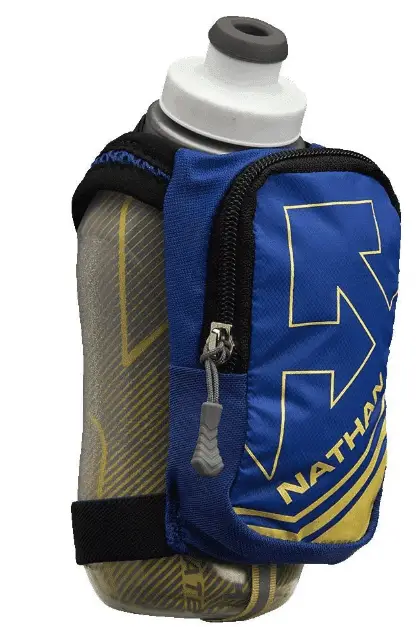 | Nathan Speedshot Plus
|  Price Price |
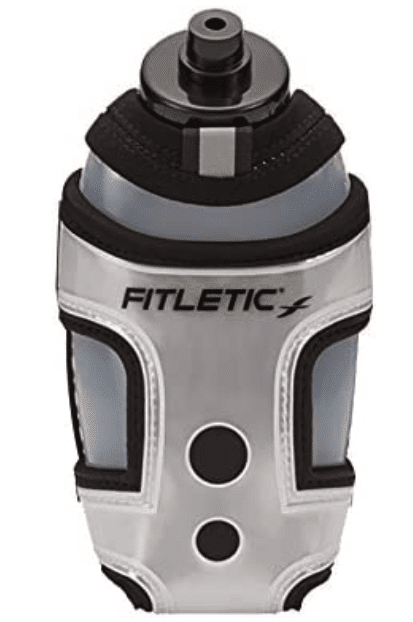 | Fitletic HydraPocket
|  Price Price |
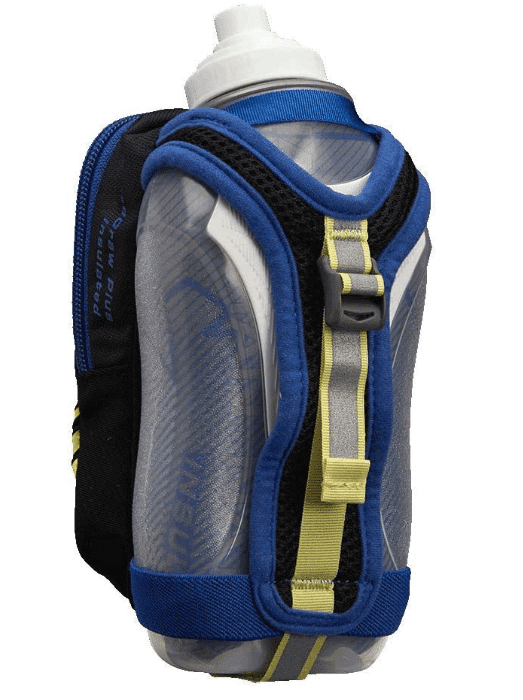 | Nathan SpeedDraw +
|  Price Price |
2. Soft Hand-Held Flask
The second option for carrying your water while you run is very similar to the first. The difference is that the water flask is soft and flexible, shrinking as you drink the water contents.
Here is an example of a soft hand-held flask, the ExoDraw from Nathan, available on Amazon.
Pros
- The strap holds the soft water bottle tightly against a runner’s hand so that they are not required to grip it while they are running.
- The strap is adjustable. This allows you to make it as loose or as tight as you prefer, no matter what size your hands are.
- The straps are made from soft and flexible material to prevent discomfort. he soft-bodied bottle shrinks as you drink the water, so there is no sloshing sound or feeling while you are running,
- Once you have finished the water, you can roll the flask up and put it in your pocket for convenience while you finish your run.
Cons
- Hand sweating remains a potential issue.
- As the bottle shrinks, you may have to adjust the straps to keep it firmly on your hand.
- It can be difficult to fill up the soft bottle with water.
- Even the larger models of these bottles do not carry a lot of water, so they are not the most ideal option for long runs.
Examples Of Soft Hand-Held Flasks For Running
| Picture | Name | Shops |
|---|---|---|
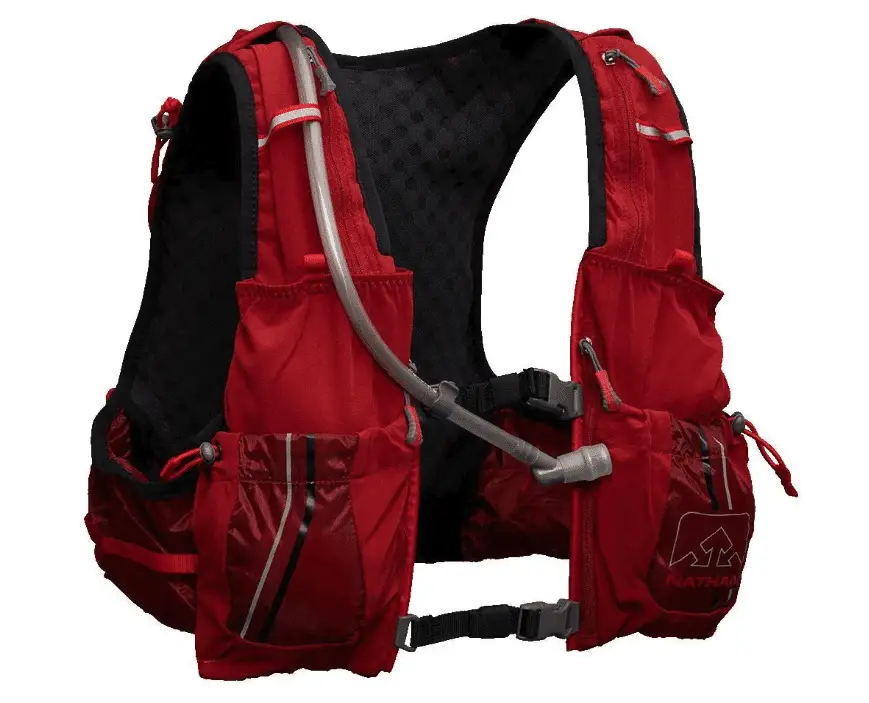 | Nathan Men’s Hydration Pack/Running Vest
|  Price Price |
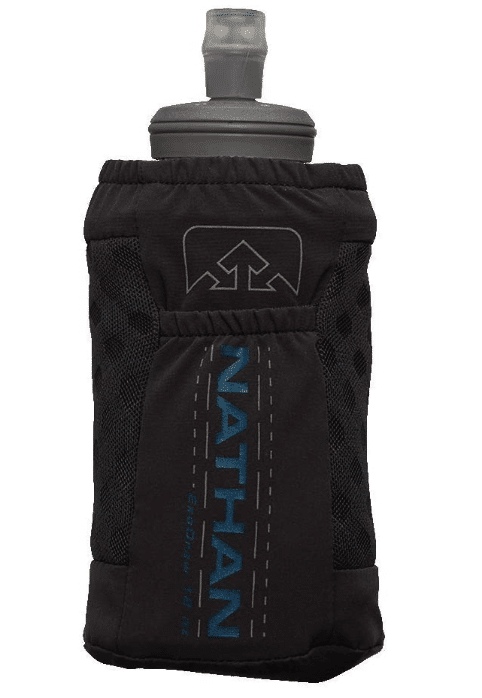 | Nathan Handheld Exodraw
|  Price Price |
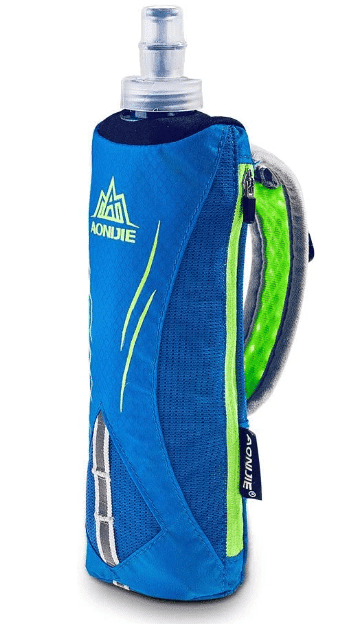 | Aonijie Quick Grip
|  Price Price |
3. Hydration Belts
The third option for carrying water while running is to use a hydration belt, which is designed to wrap around your waist and hold your water bottles securely to the sides of your body.
This is a good example of a hydration belt, the Fitletic 12 oz Hydration Belt on Amazon.
Personally, I’ve always struggled with belts like these digging into my sides. It may just be me as I see plenty of other runners using them!
Pros
- Leaves your hands free (to swing your arms)
- Allows for a balanced centre of gravity when running
- Can carry a higher volume of water than hand-held options.
- Many have the option for carrying two bottles.
- Extra pockets for ID, keys and snacks
Cons
- Belts can move around when running
- You can hear the water sloshing around in the bottles.
- Can be a challenge to pull out and replace the bottles while moving,
Examples Of Hydration Belts For Running
| Picture | Name | Shops |
|---|---|---|
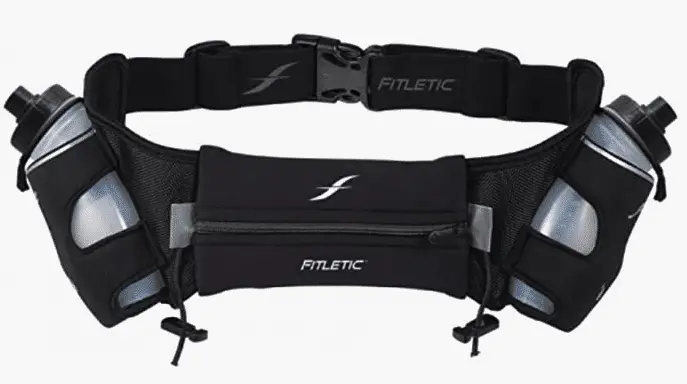 | Fitletic Hydration Belt
|  Price Price |
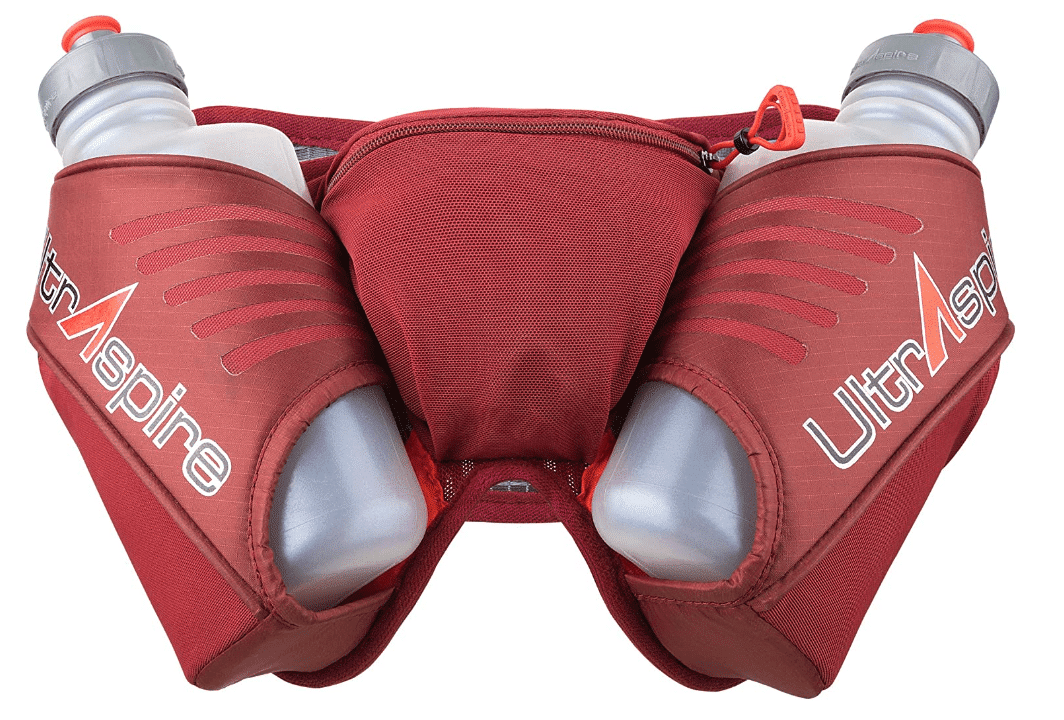 | UltrApire Speedgoat 3.0
|  Price Price |
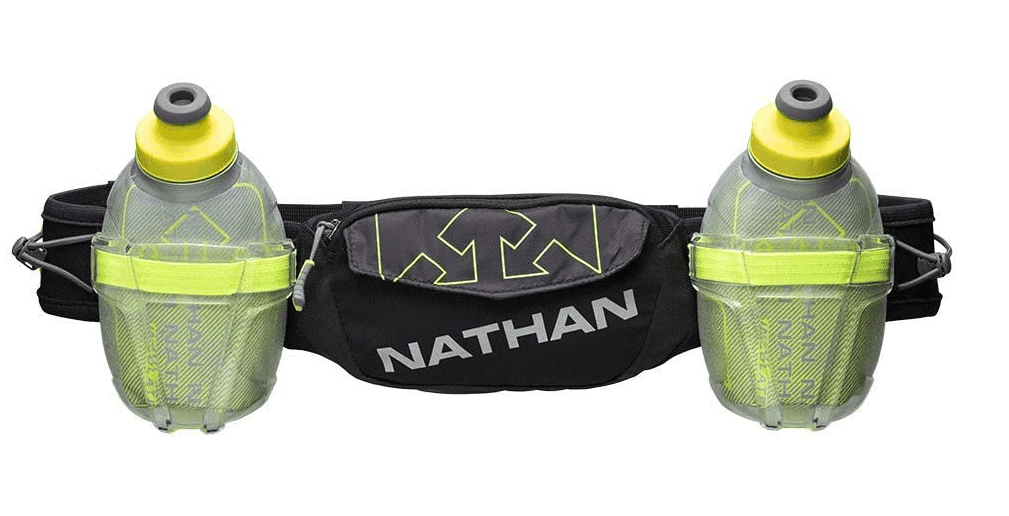 | Nathan Hydration Insulated Belt
|  Price Price |
4. Hydration Vests
Hydration vests look like water life jackets, and they are designed to carry water bottles or water bladders, or both. The water bladders in hydration vests are sealed into pockets with a flexible drinking hose attached.
The bottles are often replacable, which is good as I’ve had a few split over the years. Here is an example of a hydration vest, Nathan Men’s Hydration Pack, available from Amazon. Check out the great review video below for the pack:
Examples Of Hydration Vests For Running
| Picture | Name | Shops |
|---|---|---|
 | Nathan Men’s Hydration Pack/Running Vest
|  Price Price |
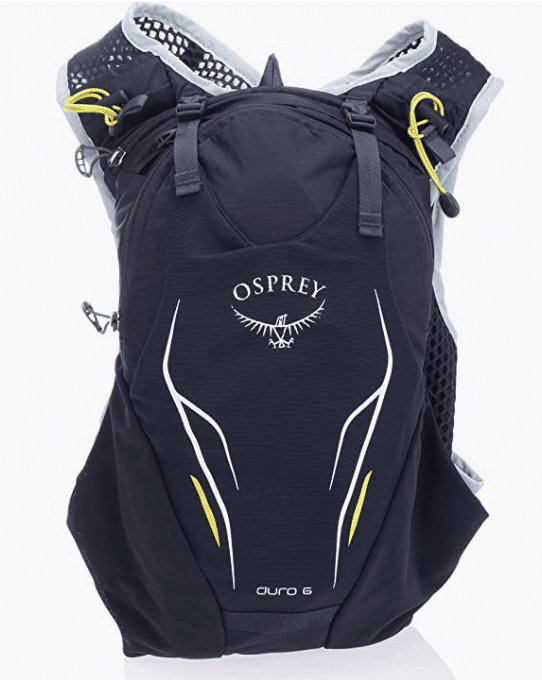 | Osprey Duro 6
|  Price Price |
5. Hydration Backpack
Hydration backpacks are designed to carry water only on your back, with an over-the-shoulder design resembling that of a standard backpack.
Here is an example of a hydration backpack, the Vibrelli Hydration Pack which comes with a 2L Hydration Water Bladder.
One of the common issues of running with a backpack is bouncing, I tried to address this issue in a recent post if you are interested.
Pros
- Hydration vests distribute the weight of the water that you are carrying over your shoulders and back, so it puts less strain on any one part of your body. It also distributes the weight between front and back, so your balance is not affected.
- Hydration vests allow you to carry more water than hand-helds or belts.
- The vests have room for multiple water storage units, so if you want to bring water and an electrolyte mix, you have the freedom to do so.
- The straps are very adjustable, enabling you to tailor the fit to your body shape.
- The hydration vest is also less likely to bounce around than the hydration belt because it sits on your torso only, not at the intersection between your torso and your lower body. This makes a difference because you twist your upper body in the opposite direction to your lower body when you run.
- You can choose if you want one that holds water bottles, which are more convenient to fill up, or water bladders, which are lighter. Some vests offer both options.
- With the water bladder options, the vests often come with drinking hoses, which means that you do not have to try and remove and replace a water bottle while running.
- There are also storage pockets for your cellphone, keys, ID, snacks, etc.
Cons
- One of the biggest drawbacks of a hydration vest is that it does cover a large portion of your torso, increasing heat retention and decreasing evaporation. Thus, you will likely sweat more in a hydration vest—but at least you can carry enough water to rehydrate.
- These are not always a good option for ladies with larger breasts because the water bottle pockets are often located over this area. However, there are vests specifically designed for ladies, but their suitability still partially depends on your shape and size.
- As the vests cover more of your body, there is an increased chance of pressure points developing with ill-fitting or unevenly packed vests.
- Water bottles can be difficult to remove and replace while running.
- Water bladders can be difficult to refill, and you also cannot see how much water is remaining in them.
Examples Of Hydration Backpacks For Running
| Picture | Name | Shops |
|---|---|---|
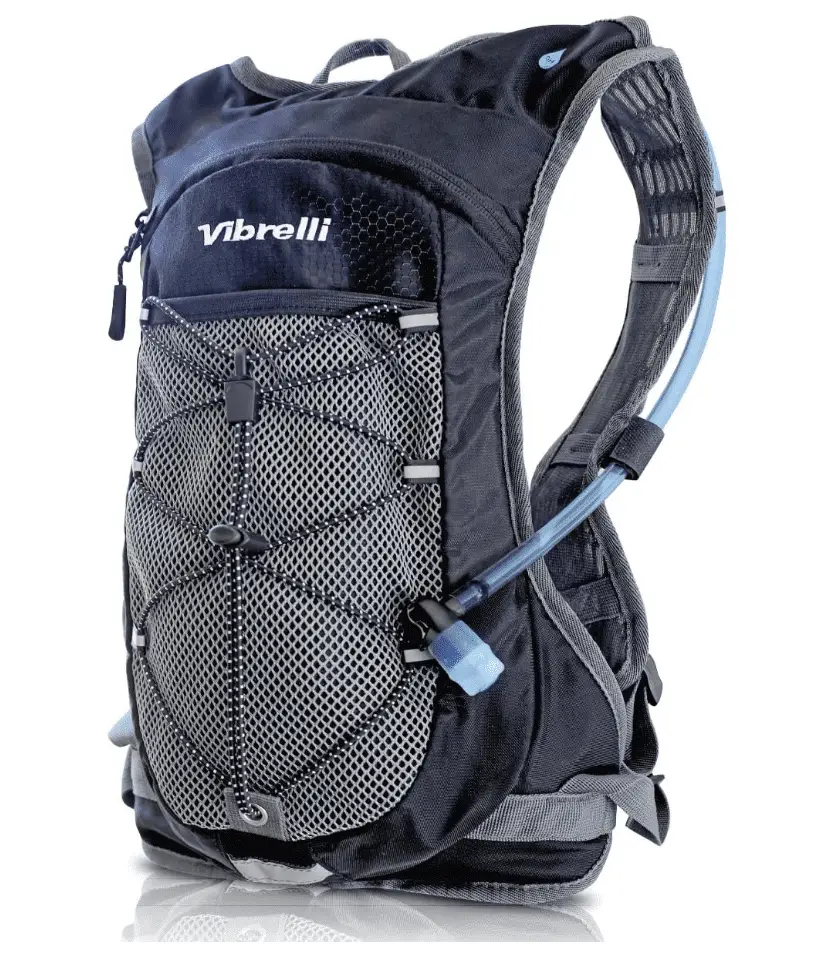 | Vibrelli Hydration Pack
|  Price Price |
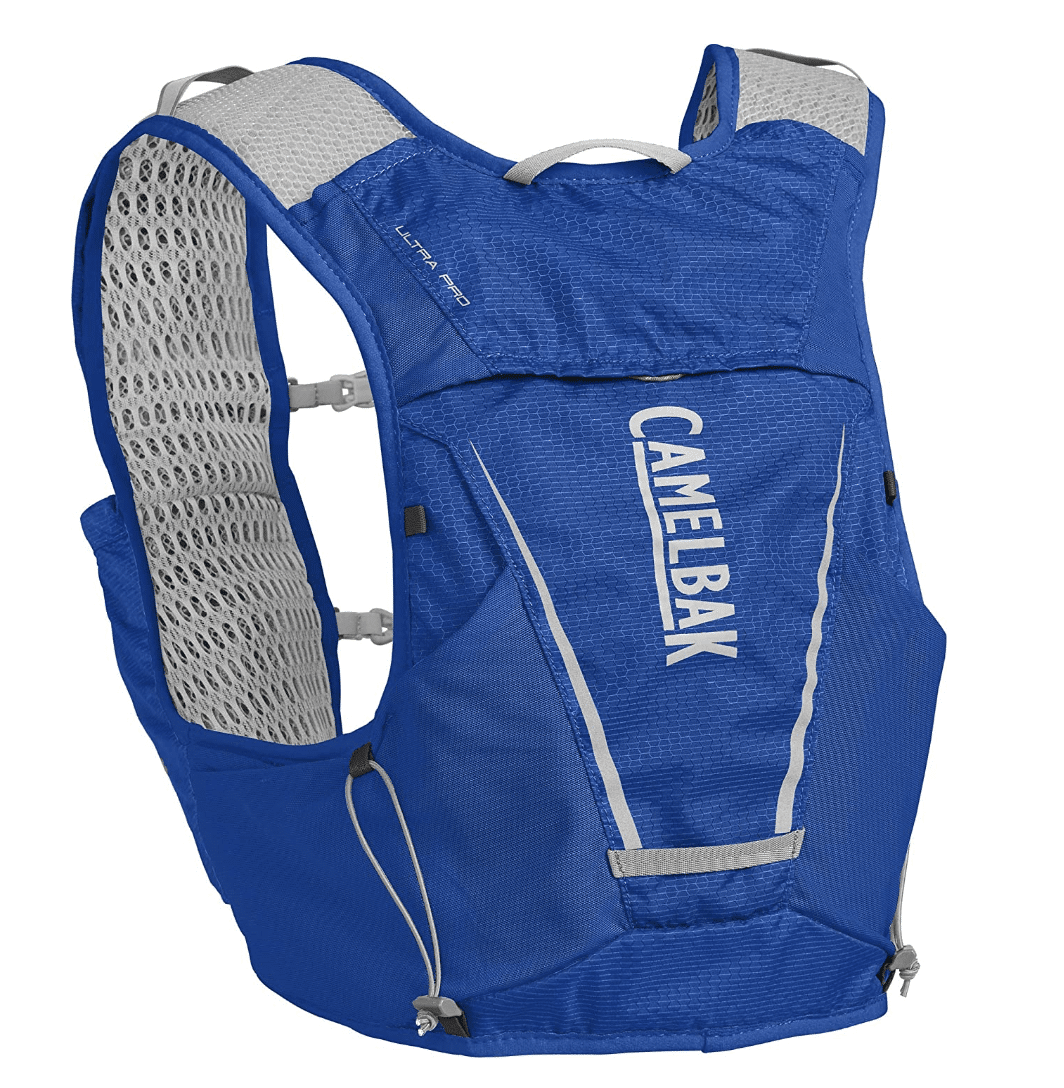 | CamelBak Circuit Run Vest
|  Price Price |
Conclusion
With the heat that summer brings, you can no longer get away with have a drink of water before and after your run. You have to carry water with you, especially on longer runs.
Fortunately, sports gear creators and manufacturers have invested time and resources into bringing you the most convenient options possible. You can strap your water bottle to your hand, waist, chest, or back with ergonomically designed products that were designed with runners like you in mind.
If you hate having to grip onto a bulky water bottle, then you can try a modified bottle that straps flat against your palm so that you don’t have to hold onto it while you run.
If you prefer not to have anything in your hands while you run, then you can try a belt, vest, or backpack. Backpacks provide the largest water supply, while vests offer you options of bladder or bottles or both. Belts cover less skin, so they are the least likely to minimize evaporation cooling.
References
https://www.runnersworld.com/trail-running/a20804604/how-to-carry-water-on-a-run/
https://www.ncbi.nlm.nih.gov/pmc/articles/PMC2838466/
https://www.podiumrunner.com/gear/6-ways-to-carry-water-on-runs/
https://journals.humankinetics.com/view/journals/ijsnem/32/4/article-p233.xml

